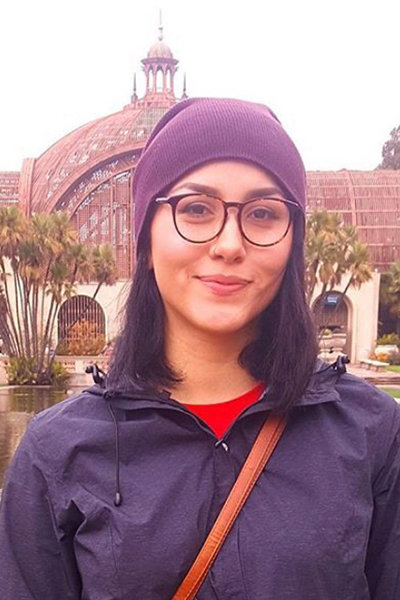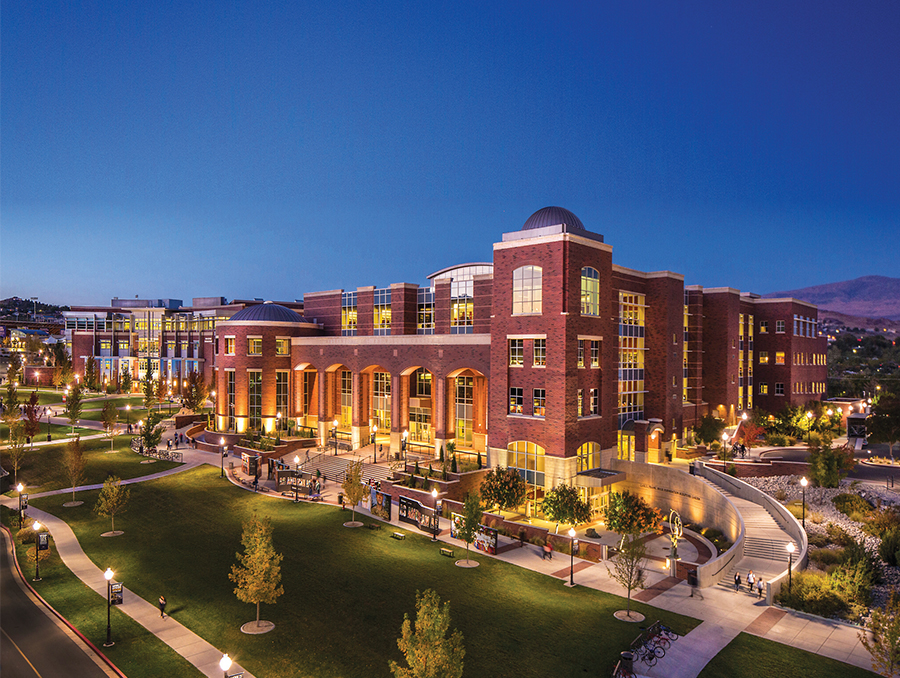Have you ever requested materials from the University Libraries and wondered what happens behind-the-scenes to get materials delivered? Probably not, but perhaps you should.
Before the time of COVID-19, the Libraries Access Services and Discovery Services departments were able to deliver resources, physical and otherwise, to users in a traditional way via the main Access Services desk located on the second floor of the Mathewson-IGT Knowledge Center or through the library website, for online resources. In this new period of emergency remote learning and virtual operations, Access and Discovery Services have had to make modifications in order to be able to provide as many resources, collections, databases, services and more to users. Learn about the people, Rainey Marvin and Jazmin Arevalo, doing this work in the latest episode of the University Libraries official podcast, “ Checked Out!”
A Whole Lot of Scanning Going On
Rainey Marvin, Access Services library assistant for course reserves, has scanned hundreds of items for Interlibrary Loan and eReserves for Libraries users since March 30. Her work has provided 198 users from around the world with collection materials through the University Libraries Interlibrary loan (ILL) service. She and her colleagues in Access Services have helped 111 University users with electronic document delivery materials, and currently has more than 30 requests from University faculty and staff for items to be scanned for summer session class reserves.

The Libraries Interlibrary loan (ILL) program provides library users with access to books, articles and book chapter scans the Libraries receives from other partner libraries from around the world. The Libraries then shares these resources with University users. Document delivery is also popular way for Libraries users to request scans from books present in the Libraries’ collection.
Marvin is the person working behind-the-scenes to scan from hardcopy materials to ensure library resources are available for students, staff, and faculty to use while in quarantine. The Libraries Access Services department includes the Campus Operator, Interlibrary Loan, Document Delivery, LiNK+, Circulation and Course Reserves. Marvin also works with the Libraries popular Anatomical Model collection.
“Things have definitely been challenging,” Marvin said. “There was a lot of change at first. It took a while to figure out how the Libraries would provide resources to users, virtually, while also trying to manage a large amount of scanning requests that had begun to pile up due to the swiftness of the shutdown.”
Marvin, since the stay-at-home order was issued, has been going into the Mathewson-IGT Knowledge Center twice a week to scan materials for students, faculty and staff. Her work is considered essential.
“I have received a lot of thanks and appreciation from faculty,” Marvin said. “Faculty have been surprised to learn that they can still get the materials they need.”
Marvin has also done a lot of work to make sure that the Libraries’ collection of popular anatomical models is available online to users.
“Luckily before the shutdown happened, the Libraries overhauled the anatomical model website,” Marvin said. “All of the models were cleaned with toothbrushes, photographed and loaded to a new webpage on the Libraries site. It was a matter of luck and good timing that we finished this project before things happened in March. We saw a major increase from a few hundred page views to the anatomy models site last year, compared to more than 1,000 page views this year thanks to the new, enhanced webpage. This means students are visiting the site and are using the models to study and prepare for classes.”
Libraries users interested accessing items in the collection can visit the Quicklinks menu on the Libraries website and navigate to Course Reserves or Interlibrary Loan. From there using a valid NetID and password, log in to ILLiad and make your request. Assistance is available to users via email: Document Delivery Services and Interlibrary Loan (ILLiad) and Course Reserves. Users are asked to email the department directly.
Accessing databases and eResources virtually
The University Libraries manages 443 databases, more than one million eBooks and more than 100,000 eJournals in its Knowledge Base of holdings.
Many Libraries users go to the website to request materials and/or access the collection of databases, but what happens behind-the-scenes to ensure your search on the website yields the results you want and need? What happens when the database you are trying to access isn’t available or isn’t working properly? Enter Jazmin Arevalo, Discovery Services library technician.
Discovery Services maintains online access and works with vendors to resolve issues that come up with remote access, including making sure the search functionality on the Libraries website works properly in our online databases and ensuring the Libraries holdings in Google Scholar are accurate.

“My main job is to manage, maintain and troubleshoot electronic resources, databases, and work with the University Libraries third party vendors to ensure our community of users can access resources without any difficulties,” Arevalo said. “I also make sure our off-campus access is set-up properly and make sure our EZ Proxy is running smoothly.”
Users don’t typically think about the behind-the-scenes work that takes place until something goes wrong.
“It’s times when users don’t find what they need or nothing magically appears in front of them that they think of these things,” she said. “There is a lot of technical work that goes into making electronic resources and databases available to users, more than you would think.”
Arevalo said her transition from working in the Knowledge Center to working from home in the time of COVID-19 has been smooth.
“Luckily, most of my work is done online and through email correspondence and phone calls, she added. “I do miss being able to pop into my colleague Emily’s cube to troubleshoot in person, but we are now using Teams and Zoom to handle these things!
“It was really crazy in the first two-to-three weeks of the transition,” she said. “There was a lot of information coming out quickly and the team was working to build the Libraries Virtual Support Resource page to give users the information they needed from the Libraries as the Stay-At-Home orders were being announced.”
For example, There were a number of databases that only worked if Libraries users had previously created an account while on campus. The Discovery Services team worked to quickly connect with vendors, contacting them with requests to adjust their authentication requirements so the databases could be used by all Libraries users.
To learn more about the work happening in Access Services and Discovery services tune into the Libraries’ podcast Checked Out!
About the University Libraries
The University Libraries embrace intellectual inquiry and innovation, nurture the production of new knowledge, and foster excellence in learning, teaching and research. During each academic year, the Libraries welcomes more than 1.2 million visitors across its network of three branch libraries: the Mathewson-IGT Knowledge Center, the DeLaMare Science and Engineering Library and the Savitt Medical Library. Visitors checked-out more than 80,000 items and completed more than 2 million database searches.












